Do you have a question about the Panasonic TH-L42S10A and is the answer not in the manual?
Instructions on safely handling the power cord and plug to prevent hazards like fire and electric shock.
Warning against opening the TV casing due to high-voltage components causing electrical shock.
Advises against using the TV in humid conditions to prevent damage and electrical hazards.
Warning that unstable placement can cause the TV to fall, leading to injury or damage.
Ensures TV stability to prevent falling hazards.
Advises adequate ventilation to prevent overheating.
Warning against obstructing ventilation, which can cause overheating or fire.
Explains the TV's automatic standby mode after inactivity.
Instructions for gently cleaning the TV screen surface.
Guidelines for cleaning the TV's exterior surfaces.
Advice on cleaning the mains plug to prevent electrical hazards.
List of trademarks and licenses used in the product.
Lists the items provided with the TV.
Information on purchasing additional accessories like wall brackets.
Step-by-step guide for inserting batteries into the remote control.
Measures to secure the TV and prevent it from tipping over.
Identifies buttons and ports on the TV itself.
Details the functions of each button on the remote control.
Instructions for connecting an aerial to the TV.
Guides on connecting external video devices.
Guides on how to tune into channels via direct input, banner, or TV Guide.
Explains functions like freeze/unfreeze picture and subtitle display.
Shows details about the current program and signal status.
Configures the TV to automatically turn off after a set period.
Explains how to change the picture's aspect ratio for optimal viewing.
Describes how to view program listings by channel or time.
Details how to select channels and view program details from the EPG.
Instructions to activate teletext service.
How to select and browse teletext pages.
Overview of FASTEXT, TOP, and List modes for enhanced teletext use.
Enables viewing TV and teletext simultaneously in split screens.
Covers storing favorite pages and viewing sub pages.
Allows viewing TV content while teletext pages are updating.
Explains how to control Panasonic devices via the TV remote.
Guides on setting appropriate codes for different Panasonic equipment.
Step-by-step guide to accessing and operating TV menus.
Details on modifying picture quality and audio options via menus.
Instructions for entering text and deleting data within menus.
Configuration settings for picture quality and display.
Settings for audio output, sound modes, and volume.
Access to tuning, system, and other configuration settings.
In-depth explanation of picture modes, color balance, noise reduction, and 3D-COMB settings.
Detailed guide to sound modes, bass, treble, surround, and audio output settings.
Covers channel tuning, system updates, VIERA Link, and power saving configurations.
Options for input labels, banner display, region select, and daylight saving.
Instructions for creating and editing favorite channel lists.
Guides on hiding channels and editing names/positions.
Procedures for manually tuning digital and analogue TV channels.
Covers automatic updates, message settings, and signal condition checks.
Information on DVI input, adapter cables, and position adjustments.
Steps to insert SD card and select photo viewing.
How to select folders, view thumbnails, and display photos.
Settings for background music, effects, interval, and repeat for slideshows.
Options to view all photos or sort them by date or month.
Instructions for inserting SD card and selecting movie files.
Guides on selecting audio settings during movie playback.
Overview of VIERA Link features and necessary connections.
Explains automatic channel download and simplified playback.
Details power saving and auto standby for connected equipment.
How to record the current TV program directly to a DIGA recorder.
Instructions for pausing and resuming live TV broadcasts.
Guides on operating connected devices using the TV remote.
Notes on connecting multiple recorders and accessing equipment.
How to control speaker volume and select between TV and theatre speakers.
Direct access to VIERA Link functions like control, recording, and speaker settings.
Options for viewing photos, movies, and slideshows from SD cards.
Lists equipment types connectable to each TV terminal.
Details analogue channel allocation and digital TV rating systems.
Guides on updating TV software and selecting stereo/bilingual sound.
Details on connecting a PC, supported resolutions, and signal types.
Important warnings regarding the safe handling of SD cards.
Information on supported file formats for card browsing.
Explanations for messages displayed during SD card operations.
Troubleshooting for noise, no image, distorted image, and panel movement.
Resolving problems with no sound, low volume, or incorrect settings.
Solutions for common issues with HDMI connections and digital TV signals.
Addresses problems like slow startup, program changes, standby mode, and remote control issues.
Instructions on safely handling the power cord and plug to prevent hazards like fire and electric shock.
Warning against opening the TV casing due to high-voltage components causing electrical shock.
Advises against using the TV in humid conditions to prevent damage and electrical hazards.
Warning that unstable placement can cause the TV to fall, leading to injury or damage.
Ensures TV stability to prevent falling hazards.
Advises adequate ventilation to prevent overheating.
Warning against obstructing ventilation, which can cause overheating or fire.
Explains the TV's automatic standby mode after inactivity.
Instructions for gently cleaning the TV screen surface.
Guidelines for cleaning the TV's exterior surfaces.
Advice on cleaning the mains plug to prevent electrical hazards.
List of trademarks and licenses used in the product.
Lists the items provided with the TV.
Information on purchasing additional accessories like wall brackets.
Step-by-step guide for inserting batteries into the remote control.
Measures to secure the TV and prevent it from tipping over.
Identifies buttons and ports on the TV itself.
Details the functions of each button on the remote control.
Instructions for connecting an aerial to the TV.
Guides on connecting external video devices.
Guides on how to tune into channels via direct input, banner, or TV Guide.
Explains functions like freeze/unfreeze picture and subtitle display.
Shows details about the current program and signal status.
Configures the TV to automatically turn off after a set period.
Explains how to change the picture's aspect ratio for optimal viewing.
Describes how to view program listings by channel or time.
Details how to select channels and view program details from the EPG.
Instructions to activate teletext service.
How to select and browse teletext pages.
Overview of FASTEXT, TOP, and List modes for enhanced teletext use.
Enables viewing TV and teletext simultaneously in split screens.
Covers storing favorite pages and viewing sub pages.
Allows viewing TV content while teletext pages are updating.
Explains how to control Panasonic devices via the TV remote.
Guides on setting appropriate codes for different Panasonic equipment.
Step-by-step guide to accessing and operating TV menus.
Details on modifying picture quality and audio options via menus.
Instructions for entering text and deleting data within menus.
Configuration settings for picture quality and display.
Settings for audio output, sound modes, and volume.
Access to tuning, system, and other configuration settings.
In-depth explanation of picture modes, color balance, noise reduction, and 3D-COMB settings.
Detailed guide to sound modes, bass, treble, surround, and audio output settings.
Covers channel tuning, system updates, VIERA Link, and power saving configurations.
Options for input labels, banner display, region select, and daylight saving.
Instructions for creating and editing favorite channel lists.
Guides on hiding channels and editing names/positions.
Procedures for manually tuning digital and analogue TV channels.
Covers automatic updates, message settings, and signal condition checks.
Information on DVI input, adapter cables, and position adjustments.
Steps to insert SD card and select photo viewing.
How to select folders, view thumbnails, and display photos.
Settings for background music, effects, interval, and repeat for slideshows.
Options to view all photos or sort them by date or month.
Instructions for inserting SD card and selecting movie files.
Guides on selecting audio settings during movie playback.
Overview of VIERA Link features and necessary connections.
Explains automatic channel download and simplified playback.
Details power saving and auto standby for connected equipment.
How to record the current TV program directly to a DIGA recorder.
Instructions for pausing and resuming live TV broadcasts.
Guides on operating connected devices using the TV remote.
Notes on connecting multiple recorders and accessing equipment.
How to control speaker volume and select between TV and theatre speakers.
Direct access to VIERA Link functions like control, recording, and speaker settings.
Options for viewing photos, movies, and slideshows from SD cards.
Lists equipment types connectable to each TV terminal.
Details analogue channel allocation and digital TV rating systems.
Guides on updating TV software and selecting stereo/bilingual sound.
Details on connecting a PC, supported resolutions, and signal types.
Important warnings regarding the safe handling of SD cards.
Information on supported file formats for card browsing.
Explanations for messages displayed during SD card operations.
Troubleshooting for noise, no image, distorted image, and panel movement.
Resolving problems with no sound, low volume, or incorrect settings.
Solutions for common issues with HDMI connections and digital TV signals.
Addresses problems like slow startup, program changes, standby mode, and remote control issues.
| Screen Size | 42 inches |
|---|---|
| Resolution | 1920 x 1080 |
| Display Type | LCD |
| Backlight Type | CCFL |
| Aspect Ratio | 16:9 |
| Contrast Ratio | 10000:1 |
| HDMI Ports | 3 |
| USB Ports | 1 |
| Component Video Input | 1 |
| Composite Video Input | 1 |
| VGA Port | 1 |
| Audio Output | 2 x 10W |
| Viewing Angle | 178° |
| Standby Power Consumption | 0.3W |
| Weight | 22 kg |
| Brightness | 500 cd/m2 |
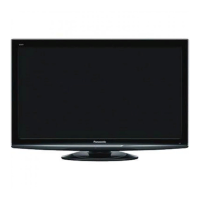
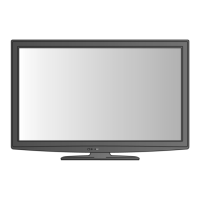
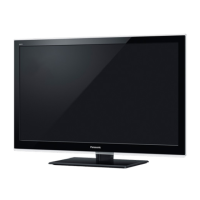
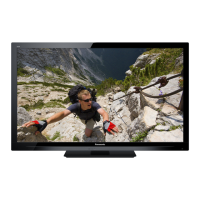
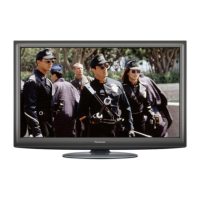
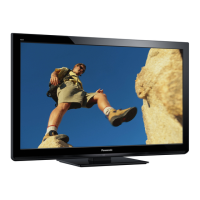




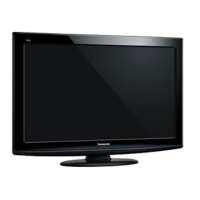

